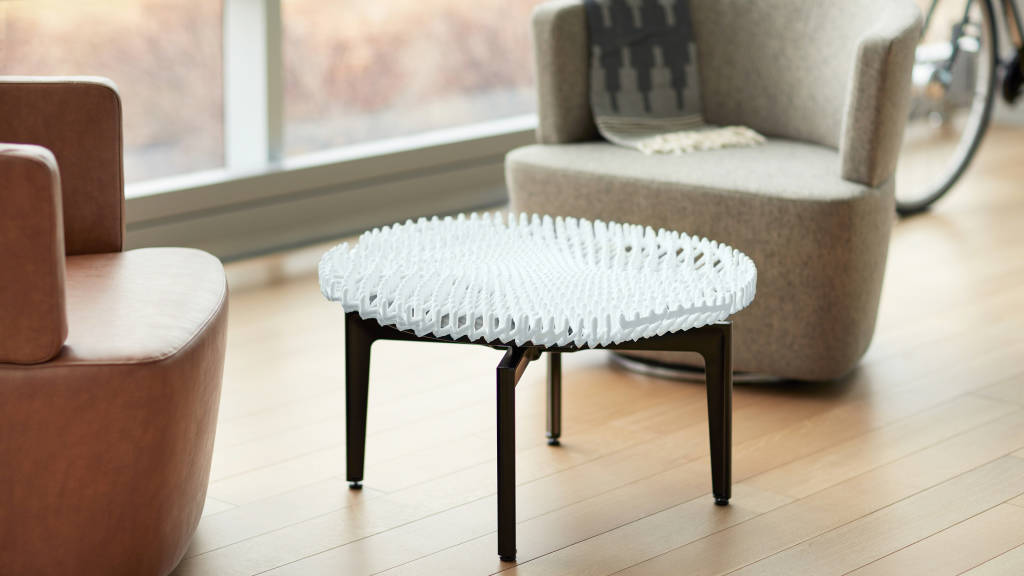
Steelcase partnered with MIT to develop a radical new method of 3D printing.
The process is called “Rapid Liquid Printing” and is unlike anything I’ve seen previously. It definitely is rapid, but I’m very curious about several aspects of this technology.
The technology was actually developed by MIT’s Self Assembly Lab, where they were challenged by the rather slow speed of today’s common 3D printers. While cost is often cited as a barrier to the more widespread adoption of 3D printing (and it is), there is most definitely another barrier: speed.
The rate of production of parts is so slow that it cannot currently be considered for any consumer oriented “made on the fly” product. People will wait for some things, but not for others. In the creative product space, it’s often not like you are compelled to wait, as their are other options to pursue.
So for some industries it is critical to produce products very quickly. The fast food industry has this figured out, but not so in 3D printing. At least not yet.
MIT’s solution is unique: it involves a build chamber filled with a static, clear gel. Into this gel is inserted a needle like extruder that moves about the chamber in 3D.
As it moves, the extruder can emit a stream of liquid material. The material rapidly solidifies after extrusion. I’m not sure what chemical process causes this, but it could be due to exposure to some element in the gel, or it could be an epoxy-like mix that solidifies on its own once expelled.
It’s also interesting in that no support structure is required: the gel supports the extruded material throughout the process.
Using this interesting approach, MIT and Steelcase have demonstrated the ability to very quickly print stick-like furniture items.
But then the questions start.
How strong is the material? Are these furniture items something you might actually be able to sit on? Is it durable in the environment? Does it degrade in sunlight? (note the Steelcase image at top appears to have printed the top of the table but NOT the legs!)
Can other materials be used? Or is this mix the only combination that exhibits the required properties?
Can you add other materials into the stream, creating composite materials such as carbon fiber-reinforced extrusions?
Are adjacently extruded layers bonded? I suspect not. If so, this makes the machine able to produce stick-like objects only, greatly constraining its possible applications.
Is it possible to make shapes that require non-contiguous movements? If separately extruded streams do not bond, this could be a significant constraint on available object geometries.
Can the stream be colored? Could you set up a way to change the color in mid-print?
How thin can an extrusion be? Is there a limit whereby it is too small to be structurally viable?
Could the nozzle by dynamically expanded to emit larger shapes during printing (thus avoiding the layer adhesion problem, if it exists)?
Well, you get my thoughts here. This appears to be a very promising idea, but there are many questions. At this point it is clearly research and it’s practical applications are not yet understood.
Via Steelcase

